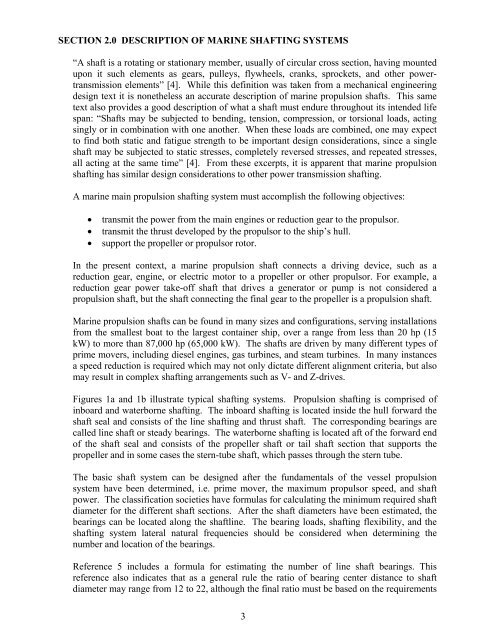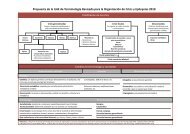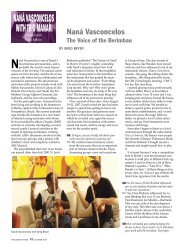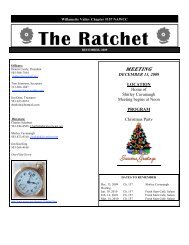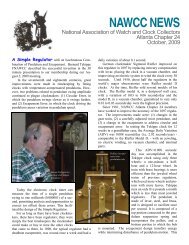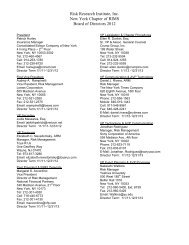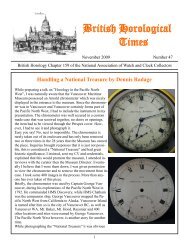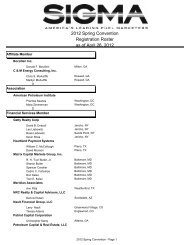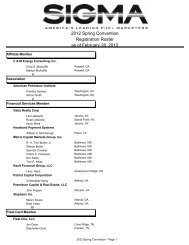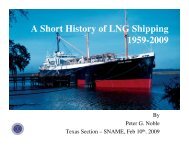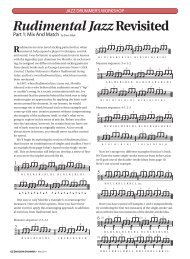Technical and Research Bulletin 3-51 - Amazon Web Services
Technical and Research Bulletin 3-51 - Amazon Web Services
Technical and Research Bulletin 3-51 - Amazon Web Services
Create successful ePaper yourself
Turn your PDF publications into a flip-book with our unique Google optimized e-Paper software.
SECTION 2.0 DESCRIPTION OF MARINE SHAFTING SYSTEMS<br />
“A shaft is a rotating or stationary member, usually of circular cross section, having mounted<br />
upon it such elements as gears, pulleys, flywheels, cranks, sprockets, <strong>and</strong> other powertransmission<br />
elements” [4]. While this definition was taken from a mechanical engineering<br />
design text it is nonetheless an accurate description of marine propulsion shafts. This same<br />
text also provides a good description of what a shaft must endure throughout its intended life<br />
span: “Shafts may be subjected to bending, tension, compression, or torsional loads, acting<br />
singly or in combination with one another. When these loads are combined, one may expect<br />
to find both static <strong>and</strong> fatigue strength to be important design considerations, since a single<br />
shaft may be subjected to static stresses, completely reversed stresses, <strong>and</strong> repeated stresses,<br />
all acting at the same time” [4]. From these excerpts, it is apparent that marine propulsion<br />
shafting has similar design considerations to other power transmission shafting.<br />
A marine main propulsion shafting system must accomplish the following objectives:<br />
• transmit the power from the main engines or reduction gear to the propulsor.<br />
• transmit the thrust developed by the propulsor to the ship’s hull.<br />
• support the propeller or propulsor rotor.<br />
In the present context, a marine propulsion shaft connects a driving device, such as a<br />
reduction gear, engine, or electric motor to a propeller or other propulsor. For example, a<br />
reduction gear power take-off shaft that drives a generator or pump is not considered a<br />
propulsion shaft, but the shaft connecting the final gear to the propeller is a propulsion shaft.<br />
Marine propulsion shafts can be found in many sizes <strong>and</strong> configurations, serving installations<br />
from the smallest boat to the largest container ship, over a range from less than 20 hp (15<br />
kW) to more than 87,000 hp (65,000 kW). The shafts are driven by many different types of<br />
prime movers, including diesel engines, gas turbines, <strong>and</strong> steam turbines. In many instances<br />
a speed reduction is required which may not only dictate different alignment criteria, but also<br />
may result in complex shafting arrangements such as V- <strong>and</strong> Z-drives.<br />
Figures 1a <strong>and</strong> 1b illustrate typical shafting systems. Propulsion shafting is comprised of<br />
inboard <strong>and</strong> waterborne shafting. The inboard shafting is located inside the hull forward the<br />
shaft seal <strong>and</strong> consists of the line shafting <strong>and</strong> thrust shaft. The corresponding bearings are<br />
called line shaft or steady bearings. The waterborne shafting is located aft of the forward end<br />
of the shaft seal <strong>and</strong> consists of the propeller shaft or tail shaft section that supports the<br />
propeller <strong>and</strong> in some cases the stern-tube shaft, which passes through the stern tube.<br />
The basic shaft system can be designed after the fundamentals of the vessel propulsion<br />
system have been determined, i.e. prime mover, the maximum propulsor speed, <strong>and</strong> shaft<br />
power. The classification societies have formulas for calculating the minimum required shaft<br />
diameter for the different shaft sections. After the shaft diameters have been estimated, the<br />
bearings can be located along the shaftline. The bearing loads, shafting flexibility, <strong>and</strong> the<br />
shafting system lateral natural frequencies should be considered when determining the<br />
number <strong>and</strong> location of the bearings.<br />
Reference 5 includes a formula for estimating the number of line shaft bearings. This<br />
reference also indicates that as a general rule the ratio of bearing center distance to shaft<br />
diameter may range from 12 to 22, although the final ratio must be based on the requirements<br />
3


